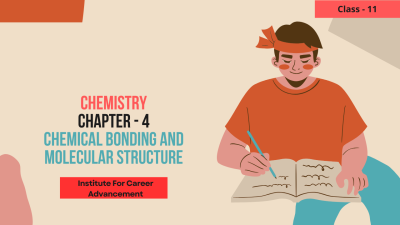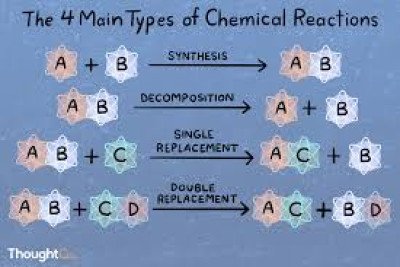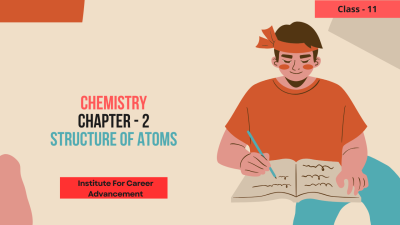Course description
The periodic table holds a treasure trove of elements, and Class 12 Chemistry delves into two fascinating groups: the d-block (transition metals) and f-block (inner transition metals). This course equips you to understand their unique properties and how they set themselves apart from the rest.
Demystifying the d-Block: The Transition Metals
Filling the d-Orbitals: Transition metals are characterized by the filling of electrons in their d-orbitals, located in the inner shells of their atoms. Imagine them as the elements occupying the center stage of the periodic table, specifically Groups 3 to 12.
A Show of Metallic Character: Get ready to explore the hallmarks of transition metals:
Shiny Appearance: Their metallic luster makes them stand out, often gleaming and reflecting light.
A Rainbow of Colors: Transition metals have a special talent – forming colored compounds! This is due to the way they absorb and emit light.
Conducting the Flow: Both heat and electricity flow readily through transition metals, making them valuable conductors.
Shifting Oxidation States: These metals can play the role of a chameleon, changing their oxidation states (losing or gaining electrons) to form diverse compounds.
The f-Block: Unveiling the Inner Transition Metals
Deep Dwelling Electrons: f-block elements take electron filling to a new level. Their electrons occupy the f-orbitals, situated even deeper within the atom. You'll find them positioned at the bottom of the periodic table, further classified into two series:
Lanthanides: These elements witness the filling of their 4f orbitals.
Actinides: Here, the 5f orbitals get occupied by electrons.
Similarities and Differences: f-block elements share some characteristics with d-block metals, but with a twist:
Rarity in Nature: f-block elements are less commonly found compared to their d-block counterparts.
Radioactive Nature: Especially for actinides, radioactivity becomes a prominent feature.
Magnetic Marvels: f-block elements often exhibit unique magnetic properties.
Why Study d- and f-Block Elements?
Understanding these block elements is crucial for unlocking further knowledge in chemistry:
Understanding Bonding: The electronic configuration of d- and f-block elements plays a vital role in explaining how they form bonds with other elements.
Catalysis: Transition metals are superstar catalysts, accelerating reactions in various processes.
Material Science: The properties of d- and f-block elements make them essential for developing new materials with desired characteristics.
Biological Significance: Some f-block elements play a role in biological processes.
পর্যায় সারণিতে উপাদানগুলির একটি ভাণ্ডার রয়েছে এবং দ্বাদশ শ্রেণীর রসায়ন দুটি আকর্ষণীয় গ্রুপে বিভক্তঃ ডি-ব্লক (রূপান্তর ধাতু) এবং এফ-ব্লক। (inner transition metals). এই কোর্সটি আপনাকে তাদের অনন্য বৈশিষ্ট্যগুলি এবং কীভাবে তারা অন্যদের থেকে নিজেদের আলাদা করে রাখে তা বোঝার জন্য সজ্জিত করে।
ডিমিস্টিফাইং দ্য ডি-ব্লকঃ ট্রানজিশন মেটালস
ডি-অরবিটালগুলি পূরণ করাঃ ট্রানজিশন ধাতুগুলি তাদের ডি-অরবিটালগুলিতে ইলেকট্রনগুলি পূরণ করে, যা তাদের পরমাণুর অভ্যন্তরীণ শেলগুলিতে অবস্থিত। এগুলিকে পর্যায় সারণির কেন্দ্রবিন্দুতে থাকা উপাদান হিসাবে কল্পনা করুন, বিশেষত গ্রুপ 3 থেকে 12।
ধাতব চরিত্রের একটি প্রদর্শনীঃ রূপান্তরিত ধাতুগুলির বৈশিষ্ট্যগুলি অন্বেষণ করার জন্য প্রস্তুত হোনঃ
চকচকে চেহারাঃ তাদের ধাতব উজ্জ্বলতা তাদের আলাদা করে তোলে, প্রায়শই উজ্জ্বল এবং আলো প্রতিফলিত করে।
রঙের একটি ইন্দ্রধনুঃ রূপান্তরিত ধাতুগুলির একটি বিশেষ প্রতিভা রয়েছে-রঙিন যৌগ তৈরি করে! এর কারণ হল তারা যেভাবে আলো শোষণ করে এবং নির্গত করে।
প্রবাহ পরিচালনাঃ তাপ এবং বিদ্যুৎ উভয়ই রূপান্তরিত ধাতুগুলির মাধ্যমে সহজেই প্রবাহিত হয়, যা তাদের মূল্যবান পরিবাহী করে তোলে।
জারণ অবস্থা পরিবর্তনঃ এই ধাতুগুলি একটি গিরগিটির ভূমিকা পালন করতে পারে, তাদের জারণ অবস্থা পরিবর্তন করে (ইলেকট্রন হারানো বা অর্জন করা) বিভিন্ন যৌগ গঠন করতে পারে।
এফ-ব্লকঃ অভ্যন্তরীণ ট্রানজিশন মেটাল উন্মোচন
গভীরভাবে বসবাসকারী ইলেকট্রনঃ এফ-ব্লক উপাদানগুলি ইলেক্ট্রন ভরাটকে একটি নতুন স্তরে নিয়ে যায়। তাদের ইলেকট্রনগুলি এফ-অরবিটালগুলি দখল করে, যা পরমাণুর আরও গভীরে অবস্থিত। আপনি তাদের পর্যায় সারণির নীচে অবস্থিত দেখতে পাবেন, যা আরও দুটি সিরিজে শ্রেণীবদ্ধ করা হয়েছেঃ
ল্যান্থানাইডসঃ এই উপাদানগুলি তাদের 4f অরবিটালের ভরাট প্রত্যক্ষ করে।
অ্যাক্টিনাইডসঃ এখানে, 5f অরবিটালগুলি ইলেকট্রন দ্বারা দখল করা হয়।
সাদৃশ্য এবং পার্থক্যঃ এফ-ব্লক উপাদানগুলি ডি-ব্লক ধাতুগুলির সাথে কিছু বৈশিষ্ট্য ভাগ করেঃ
প্রকৃতিতে বিরলতা-এফ-ব্লক উপাদানগুলি তাদের ডি-ব্লক অংশগুলির তুলনায় কম পাওয়া যায়।
তেজস্ক্রিয় প্রকৃতিঃ বিশেষ করে অ্যাক্টিনাইডগুলির ক্ষেত্রে তেজস্ক্রিয়তা একটি বিশিষ্ট বৈশিষ্ট্য হয়ে ওঠে।
চৌম্বকীয় বিস্ময়ঃ এফ-ব্লক উপাদানগুলি প্রায়শই অনন্য চৌম্বকীয় বৈশিষ্ট্য প্রদর্শন করে।
কেন ডি-এবং এফ-ব্লক উপাদানগুলি অধ্যয়ন করবেন?
রসায়নে আরও জ্ঞান অর্জনের জন্য এই ব্লক উপাদানগুলি বোঝা গুরুত্বপূর্ণঃ
বোঝা। বন্ধন-ডি-এবং এফ-ব্লক উপাদানগুলির বৈদ্যুতিন বিন্যাস কীভাবে তারা অন্যান্য উপাদানগুলির সাথে বন্ধন গঠন করে তা ব্যাখ্যা করতে গুরুত্বপূর্ণ ভূমিকা পালন করে।
অনুঘটকঃ রূপান্তর ধাতুগুলি সুপারস্টার অনুঘটক, যা বিভিন্ন প্রক্রিয়ায় বিক্রিয়াকে ত্বরান্বিত করে।
বস্তুগত বিজ্ঞানঃ ডি-এবং এফ-ব্লক উপাদানগুলির বৈশিষ্ট্যগুলি পছন্দসই বৈশিষ্ট্য সহ নতুন উপকরণ বিকাশের জন্য এগুলিকে প্রয়োজনীয় করে তোলে।
জৈবিক তাৎপর্যঃ কিছু এফ-ব্লক উপাদান জৈবিক প্রক্রিয়াগুলিতে ভূমিকা পালন করে।



















